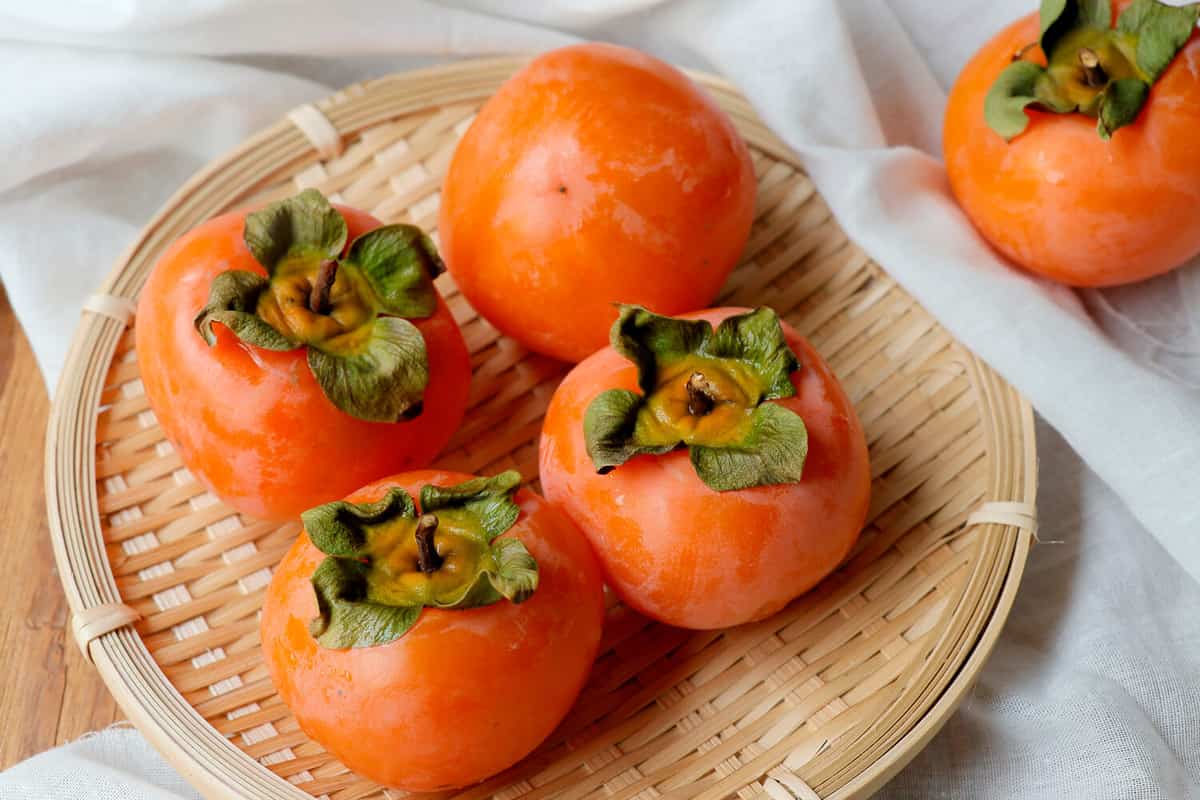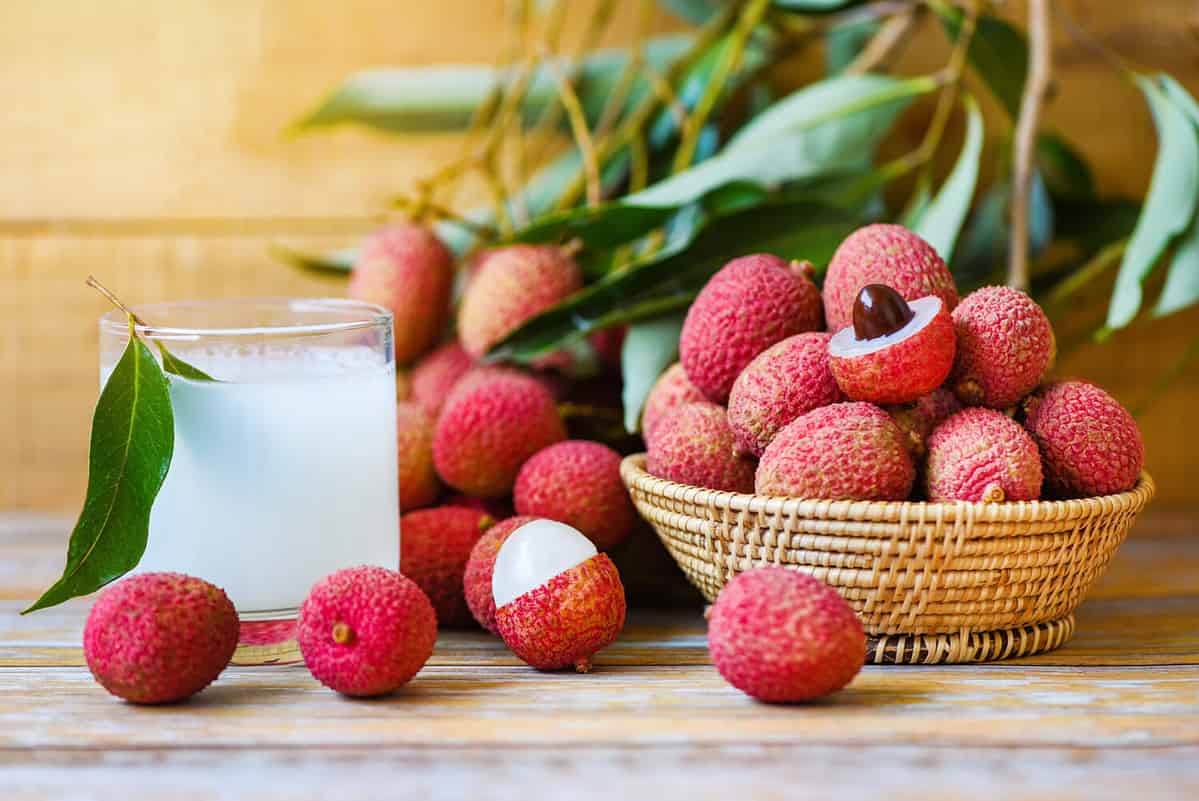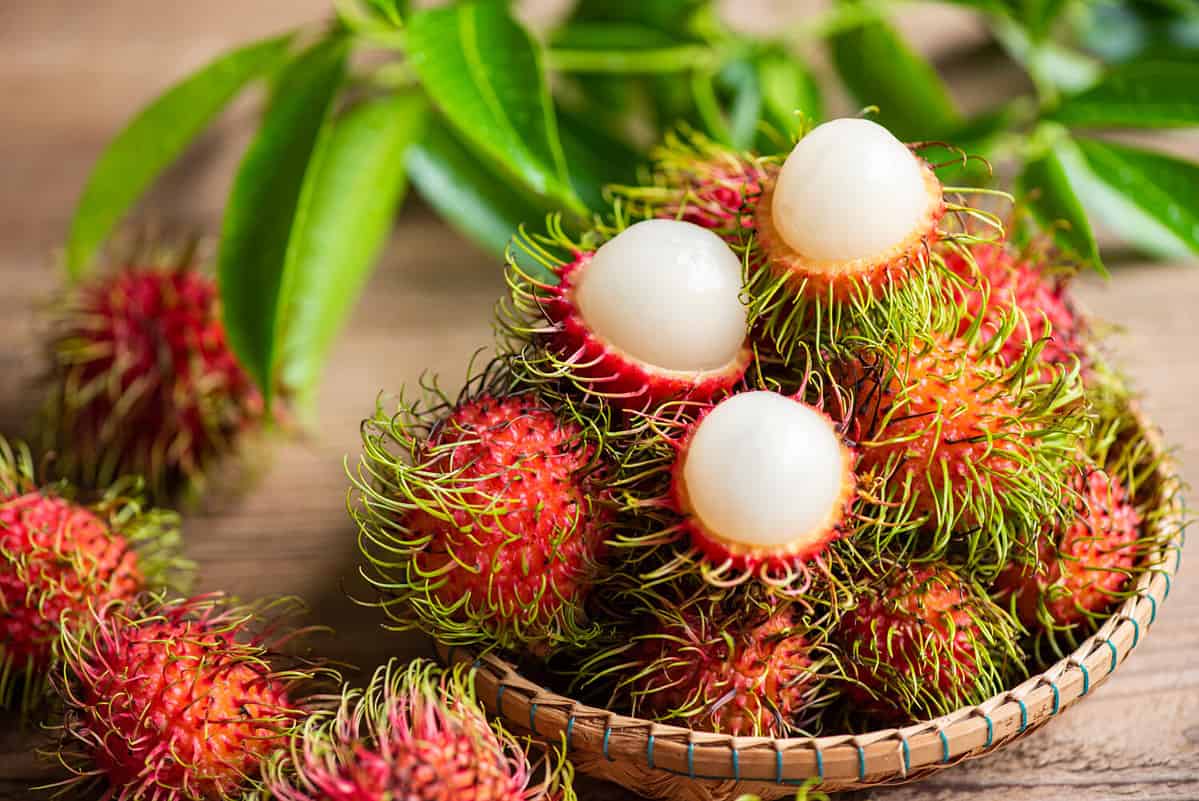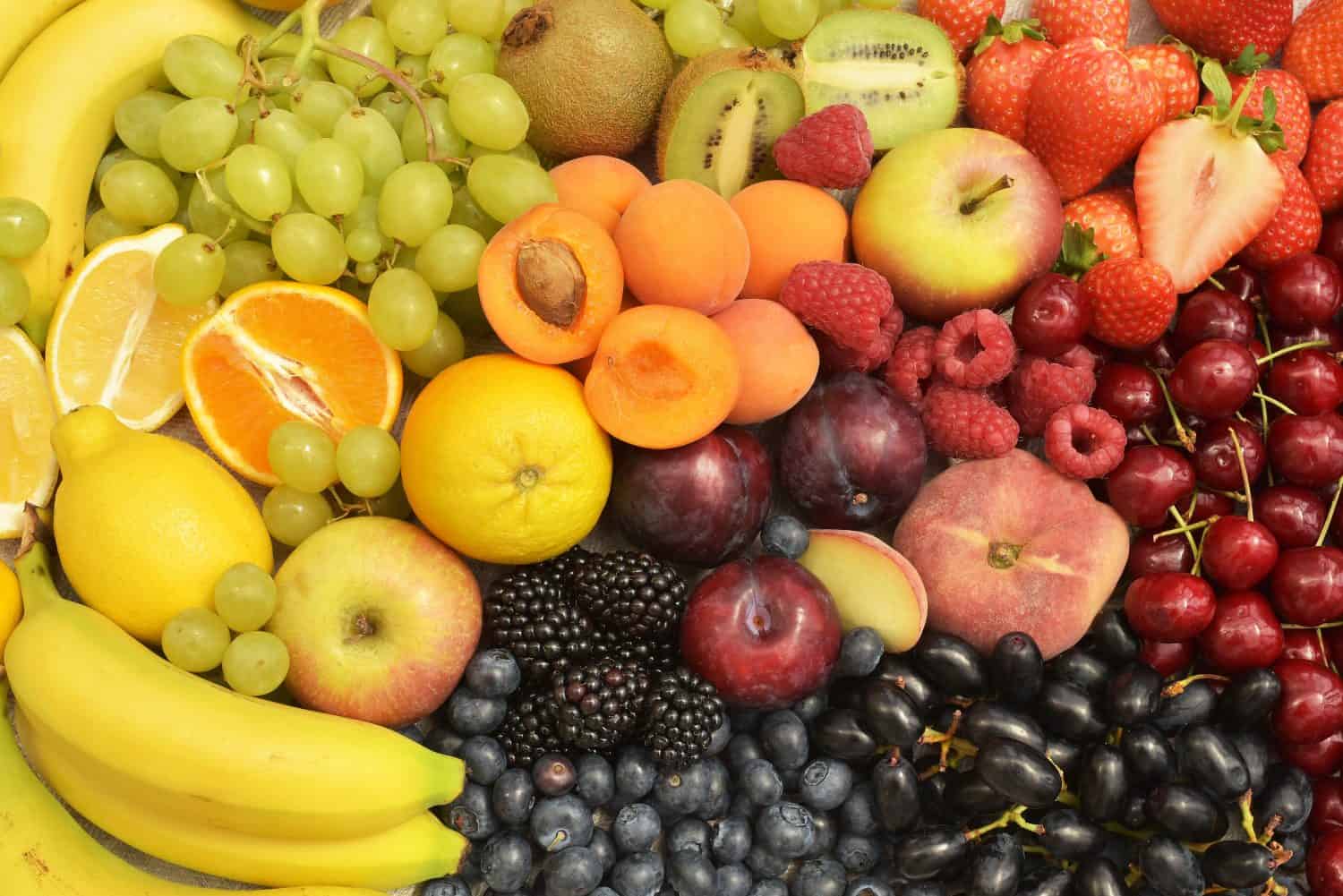Fruits are an important part of every diet and if you have young kids, you likely spend more money than you’d like to on fruit. There are many popular American-grown fruits such as blueberries, grapes, and pineapples. However, there are also many fruits grown in the United States that most Americans can’t identify.
It’s common to see strawberries, blueberries, and grapes in the store, but even the most avid fruit-eater might not recognize American-grown fruits like persimmons, crabapples, or pawpaws. There’s no shortage of tasty fruits out there, so if you haven’t heard of some of these fruits, try branching out from your regular fruit haul and discover something new.
Not all of these fruits are found at your typical grocery store, but you can find many of them at farmer’s markets. Keep reading to find out about 11 American-grown fruits that most Americans can’t identify.
Crabapples

©Alaskajade/Shutterstock.com
- Region: Grown in most regions of the United States
- Nutritional benefits: Good source of vitamin C and soluble fiber
Apples are one of the top fruits grown in the United States, but most Americans are less familiar with crabapples. Although crabapples are much smaller than your typical apple, you can use them in similar ways and they have similar nutritional benefits.
Crabapples grow all across the United States except you won’t find them growing in North Dakota, Arizona, Idaho, or Hawaii. These miniature apples are packed with Vitamin C and are also a great source of soluble fiber. They’re pretty tart compared to your standard apple, but you can still use them to make cider, jelly, or even pie.
Persimmons

©GWX/Shutterstock.com
- Region: Grown in the Southeastern United States, especially in the South Atlantic and Gulf States
- Nutritional benefits: High in vitamin A and fiber
American persimmons are native to the Southeastern regions of the United States and are especially common in humid climates. These tart fruits look like a cross between an apple and a tomato.
Persimmons are a good source of vitamin A and vitamin C. They also are high in fiber, despite being low in calories. They’re relatively uncommon compared to other types of American-grown fruits but you’ll find the most persimmons near the Mississippi River Valley.
Juneberries

©Motalb/Shutterstock.com
- Region: Grown in the upper Midwest
- Nutritional benefits: Good source of iron, fiber, and antioxidants
Many berries are grown and native to the United States. Some of the more common berries, such as strawberries and blueberries, are ones that most Americans could identify and they’re easy to find in your typical grocery store.
Juneberries, on the other hand, are also native to North America, but they’re less common. Much like other berries, juneberries can be eaten as a snack or baked into your favorite desserts. These berries are a great source of iron and have much more iron than similar berries like blueberries. They’re also high in fiber, antioxidants, and vitamin C.
Pawpaws

©thenaturelad/Shutterstock.com
- Region: Grown in the eastern United States
- Nutritional benefits: Full of vitamin C, fiber, and antioxidants
There are numerous benefits to eating pawpaws, but it’s a fruit that many Americans wouldn’t be able to identify. The trees that pawpaws grow on are the largest edible fruit trees that are native to the United States. Despite their tropical appearance and taste, they’re native to North America.
Pawpaws have a citrusy flavor and are packed with many nutrients such as vitamin C, magnesium, potassium, and antioxidants. They can also aid in digestion with the amount of digestive enzymes and fiber they contain.
Kumquats

©Valentyn Volkov/Shutterstock.com
- Region: Grown in the southern regions of the United States, including parts of Florida, Louisiana, and California
- Nutritional benefits: High in vitamin C and vitamin A
Kumquats are a relatively small fruit that looks similar to an orange, but unlike oranges, the peel of kumquats are edible. Like many other citrus fruits, kumquats are known for their high amounts of vitamin C.
Kumquats have many nutritional benefits and they’re also low in calories. About five kumquats contain 71 calories as well as 73% of your daily intake of vitamin C. These orange fruits are both sweet and tart. Since they don’t need to be peeled, they’re easy to eat on the go.
Gooseberries

©Avelina/Shutterstock.com
- Region: Grown in the Northeast and Pacific Northwest United States
- Nutritional benefits: Good source of vitamin C, fiber, and potassium
Another type of berry that most Americans may not be familiar with is the gooseberry. American gooseberries look similar to grapes and are typically purple when ripe. While the American varieties of gooseberries are native to North America, there are other types of gooseberries grown in Europe and Asia.
American gooseberries are mostly grown in the Northeast and Pacific Northwest regions of the United States. These berries go from green to purple, and the flavor greatly changes depending on when you pick them. Ripe gooseberries also taste similar to grapes in their sweetness.
Banana Melons

©radadin/Shutterstock.com
- Region: Grown in Florida, Georgia, Texas, Arizona, and California
- Nutritional benefits: High in vitamin C, vitamin A, potassium, and fiber
Banana melons got their name because they can be similar in color and appearance to a banana. These melons are native to the United States and mostly grow in the southern regions of the US, including parts of Florida, Georgia, Texas, Arizona, and California.
The inside of the banana melon looks similar to other melons like the cantaloupe. It’s also sweet and the scent of the melon is even similar to a banana. There are many benefits to eating banana melons and these melons are high in vitamin C, vitamin A, potassium, fiber, and other nutrients.
Lychees

©Bigc Studio/Shutterstock.com
- Region: Grown in Florida, Hawaii, and California
- Nutritional benefits: Good source of vitamin C, potassium, and copper
Lychee is a tropical fruit that’s native to Southeast Asia. It grows mostly in warm climates so you’ll find lychee in Florida, Hawaii, and California in the United States. The flavor of lychee fruit is usually compared to that of a strawberry or grape but with a bit of citrus added in.
You can eat lychee like any other fruit, but dried and canned lychee are easier to find in regions where lychee isn’t grown. It’s also common for lychee to be made into juice. There are many health benefits to eating lychee, including the fact that it’s high in vitamin C, potassium, and copper.
Rambutans

©Bigc Studio/Shutterstock.com
- Region: Grown in Hawaii, Florida, and Puerto Rico
- Nutritional benefits: Good source of antioxidants, vitamin C, fiber, and copper
It’s no wonder that most Americans can’t identify rambutan considering its strange appearance. Although they’re two different fruits, rambutan is often confused with lychee. These two fruits are from the same family but they taste and look slightly different.
On the outside, rambutan has distinct flexible spikes, which is one of the differences between rambutan and lychee. The taste of both fruits is similar, but rambutan is sweeter than lychee without the citrusy flavor. The flavor of rambutan is often compared to a strawberry or grape.
Mangosteens

©Ika Rahma H/Shutterstock.com
- Region: Grown in Florida, Hawaii, and Puerto Rico
- Nutritional benefits: High in vitamin C, fiber, folate, and antioxidants
Mangosteen is another tropical fruit that grows in certain regions of the United States. On the outside, mangosteen is purple like a plum but it’s a relatively small fruit. Even though this fruit is grown in parts of the US, it’s not easy to find in most grocery stores.
There are many health benefits to eating mangosteens, including its anti-inflammatory properties and high level of antioxidants. Despite having mango in the name, this fruit isn’t related to the mango. Mangosteen has a sweet and slightly sour flavor while mangos are much sweeter.
Pitayas

©PopoGraph/Shutterstock.com
- Region: Grown in Florida, Hawaii, and Puerto Rico
- Nutritional benefits: High in antioxidants, vitamin C, fiber, and omega-3 fatty acids
Pitaya, also known as dragon fruit, is an interesting-looking fruit that has become more popular in certain regions of the United States. This fruit is native to Central America and South America but is also grown in certain parts of the US.
The pitaya is full of edible seeds and the flesh on the inside is either white or red, depending on the variety. This sweet fruit tastes similar to a watermelon and the seeds on the inside give it a texture that’s similar to a kiwi.
The image featured at the top of this post is ©KateStock/Shutterstock.com.
